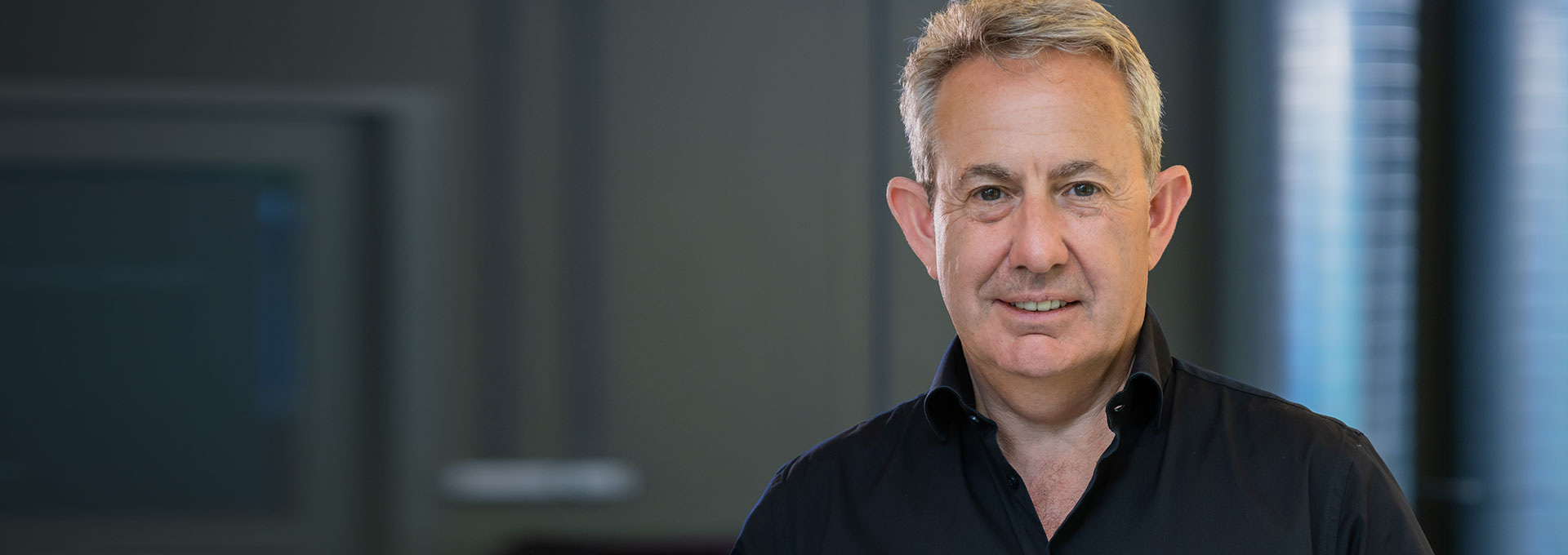
Focus on the human being

As Chief Experience Design Officer, Sean Carney has overall responsibility for all the capabilities around design. Burkhard Jacob, Managing Director Red Dot Institute, met him for an interview in Eindhoven. In the first of four parts of the interview, Sean Carney talks about his motivation, that of his team and the attitude that Philips takes as a company.
Burkhard Jacob: Sean, why is working at Philips more than just a job for you?
Sean Carney: It’s more than just a job because we’re designing with meaning and purpose. We get to impact real peoples’ lives every single day. And quite often, it’s the people who are in the most vulnerable situations: those without good access to care, or those who are vulnerable because they’re undergoing a medical procedure. Equally, we’re also tasked to design solutions and experiences to relieve the strain, the pressure, the stress our healthcare providers are experiencing today. So, really focusing on helping the nurses, the practitioners, the people who are running the hospitals, who are in a uniquely difficult position right now coming out of the pandemic. At Philips Experience Design, we have the ability not just to witness these challenges first hand but actually have the opportunity to do something about it. We are in the rewarding position to be able to design and provide practical solutions to these issues, which is ultimately very compelling and motivating.
Is this also a motivation for the members of the Experience Design team?
Absolutely. I think everyone you saw during the day talked about the meaning, the purpose and the intention. You know, one of the biggest complaints I get from designers is that they want to be closer to more customers on an even more regular basis. They would live and breathe and eat alongside the clinicians and the patients if they could. And we do enable that where possible, but it’s not always practical, since of course these people are busy treating patients.
But at the end of the day, we want to ensure our designers are not just facilitating the interaction with clinicians, nurses, patients and the management of a hospital. We aim to ensure our designers are the “glue” who ultimately bring these various stakeholders together as one team, with a focus on co-creating impactful and scalable solutions.
Why do you believe in getting the designers to where the action is?
This goes back to one of the key moments of my career. Twenty-five or 30 years ago, I was reading a Harvard Business paper by Dorothy Edwards on empathic design. The proposition was: you have people with problems, and then you have people who can fix problems. Wouldn’t it be great if we could simply put these people together? As we add more people and functions aiming to interpret the needs, problems or challenges of a user, there is more of a chance of misinterpretation and incorrect assumptions. By bringing problem solvers (like designers and engineers) together with the user in this way, you get the real magic to happen... So, I have always believed in getting the designers to where the action is. We cannot design in isolation, and we really do have to understand the context.
Is this attitude typical for Philips today compared to the past?
I think that’s the beauty of what I have been able to build on. The legacy Stefano Marzano left was the human-centred design approach – that was his big philosophy. We have been able to mature that and take it to another level. It is absolutely critical to understand the context of healthcare, and to do that our designers have to actually go and witness and experience for themselves the “real world” of a clinician or a patient, rather than just taking a brief from somebody. This helps build true empathy across the design organisation and helps ensure we design meaningful and impactful solutions that matter.
Not only is Philips exemplary when it comes to putting into practice its own claim for a multidisciplinary approach to design, it is also one of the few companies worldwide to offer solutions to the pressing issues of the 21st century. Against the backdrop of an ageing population, the increase in chronic illnesses, the threat of pandemics and rising healthcare costs, Philips’ strategic realignment and repositioning as a leading health tech company is also likely to provide impetus to other companies.
The Philips Experience Design Team led by Sean Carney puts these ideals and ideas into practice using innovative technologies. The team always starts from the perspective of the product’s subsequent use in practice. This approach results in devices that are intuitive and simple to use and operate but that are also effective and deliver meaningful outcomes.
For this accomplishment, the design team is receiving the honorary title “Red Dot: Design Team of the Year 2022”. Sean Carney and his team are worthy successors to last year’s recipient, Studio F. A. Porsche